Oncologic trogocytosis of an original stromal cells induces chemoresistance of ovarian tumours
- PMID: 19079610
- PMCID: PMC2597737
- DOI: 10.1371/journal.pone.0003894
Oncologic trogocytosis of an original stromal cells induces chemoresistance of ovarian tumours
Abstract
Background: The microenvironment plays a major role in the onset and progression of metastasis. Epithelial ovarian cancer (EOC) tends to metastasize to the peritoneal cavity where interactions within the microenvironment might lead to chemoresistance. Mesothelial cells are important actors of the peritoneal homeostasis; we determined their role in the acquisition of chemoresistance of ovarian tumours.
Methodology/principal findings: We isolated an original type of stromal cells, referred to as "Hospicells" from ascitis of patients with ovarian carcinosis using limiting dilution. We studied their ability to confer chemoresistance through heterocellular interactions. These stromal cells displayed a new phenotype with positive immunostaining for CD9, CD10, CD29, CD146, CD166 and Multi drug resistance protein. They preferentially interacted with epithelial ovarian cancer cells. This interaction induced chemoresistance to platin and taxans with the implication of multi-drug resistance proteins. This contact enabled EOC cells to capture patches of the Hospicells membrane through oncologic trogocytosis, therefore acquiring their functional P-gp proteins and thus developing chemoresistance. Presence of Hospicells on ovarian cancer tissue micro-array from patients with neo-adjuvant chemotherapy was also significantly associated to chemoresistance.
Conclusions/significance: This is the first report of trogocytosis occurring between a cancer cell and an original type of stromal cell. This interaction induced autonomous acquisition of chemoresistance. The presence of stromal cells within patient's tumour might be predictive of chemoresistance. The specific interaction between cancer cells and stromal cells might be targeted during chemotherapy.
Conflict of interest statement
Figures
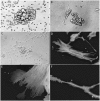
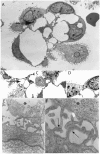
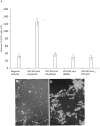



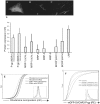
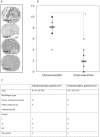
References
-
- Jemal A, Siegel R, Ward E, Hao Y, Xu J, et al. Cancer statistics. CA Cancer J Clin. 2008;58:71–96. - PubMed
-
- Bhoola S, Hoskins WJ. Diagnosis and management of epithelial ovarian cancer. Obstet Gynecol. 2006;107:1399–1410. - PubMed
-
- Eisenkop SM, Spirtos NM, Lin WC. “Optimal” cytoreduction for advanced epithelial ovarian cancer: a commentary. Gynecol Oncol. 2006;103:329–35. - PubMed
-
- Pfisterer J, Ledermann JA. Management of platinum-sensitive recurrent ovarian cancer. Semin Oncol. 2006;33:S12–6. - PubMed
MeSH terms
Substances
LinkOut - more resources
Full Text Sources
Other Literature Sources
Medical
Research Materials
Miscellaneous

